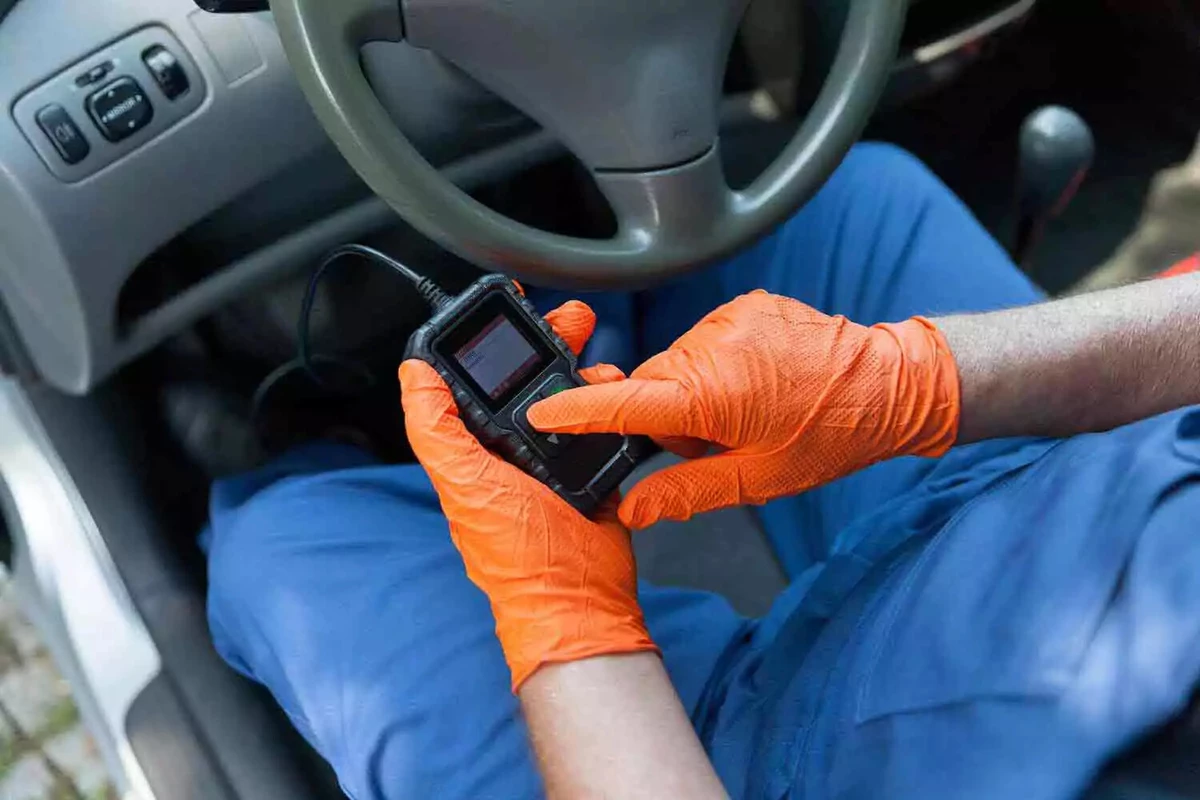Modern fuel-injected engines use an array of electronic sensors that relay information to the engine control unit (ECU). The mass air flow (MAF) sensor plays a crucial role in formulating the ideal balance of air and fuel for peak efficiency and performance. A dirty, clogged, or faulty MAF sensor can send the wrong signals to the ECU, causing the engine to run poorly.
What Is a MAF Sensor?

The MAF sensor is typically located next to the air intake housing.
The MAF sensor measures the volume of air coming into the engine, translating to an electronic signal. The ECU reads the signal and computes the exact amount of fuel required to hit the ideal fuel-to-air ratio. If the MAF sensor malfunctions and sends bad data, the ECU will add an incorrect amount of fuel, running “rich” (too much fuel) or “lean” (too little fuel).
The MAF sensor data is often paired with data from a manifold absolute pressure (MAP) sensor and an intake air temperature (IAT) sensor for a more accurate measure of incoming air volume and density. Read our
MAP Sensors and Managing Airflow
- opens in new window or tab.
guide for a more comprehensive look into the relationship between MAF and MAP sensors in an engine with electronic fuel injection.
Dirty or Faulty MAF Sensor Symptoms

OBDII readers provide details about check engine light codes.
A too-rich or too-lean fuel-to-air mix causes various problems ranging from minor annoyances to major engine damage. A check engine light can be an early warning of trouble ahead. Common symptoms of a dead, dying, or dirty MAF sensor include:
-
Engine rpm changing or surging without throttle input
-
Sudden decrease in fuel mileage
-
Detonation or rattling noise on acceleration
-
Hard starting, poor or rough idle, or stalling once running
-
Black tailpipe smoke on hard acceleration
All of these symptoms are caused by an incorrect fuel-air mix, but rich or lean ratio problems can result from other system or part failures. Read
all about mass air flow sensors
- opens in new window or tab.
for guidance on MAF sensor maintenance and diagnostic testing.
How Long Should an MAF Sensor Last?

With thorough cleaning, some older MAF sensors can be brought back to spec.
Unlike auto parts that wear out while they work, MAF sensors are engineered to last the lifetime of the engine under normal operating conditions. But real-world driving often clashes with manufacturer expectations, so your MAF sensor’s service life may vary.
Severe duty operation, road salt, clogged or compromised air filtration, cracked intake tubing, or corroded wiring can all shorten an MAF sensor’s service life.
Replacing Your MAF Sensor Is Quick and Easy

With thorough cleaning, some older MAF sensors can be brought back to spec.
MAF sensors require inspection and maintenance to go the distance. The first step in diagnosing a bad MAF sensor is a visual inspection. Most mass airflow sensors sit just past the air intake housing. Loose or broken intake clamps or cracked hoses can cause vacuum leaks. Air entering the intake downstream of the MAF is not measured, so it will throw off the fuel-air ratio without the ECU understanding how to fix it.
A clogged air filter or malfunctioning positive crankcase ventilation (PCV) system can lead to dirt or varnish buildup on the MAF, causing inaccurate readings. Objects as small as a mosquito or dandelion seed can foul an MAF. Removing, inspecting, and cleaning with a specialized MAF cleaner can correct faulty readings. If cleaning the MAF fixes the malfunction, your next step should be Installing a new engine air filter. Learn how to
clean and replace a mass air flow sensor
- opens in new window or tab.
with our step-by-step guide.
MAF Sensor Replacement Cost
Removing and replacing the MAF sensor is a straightforward plug-and-play operation in most vehicles. Total replacement cost will vary. On most cars, the job might take an hour or so of your time, a can of MAF cleaner, and a fresh engine air filter. Our MAF sensor buyers guide will help you find the right part for your engine and the right price for you.
Problems After Replacing Your MAF Sensor
With an accurate MAF sensor signal restored, the ECU should be able to accurately adjust fuel delivery and resolve rough running, poor engine performance, or stalling problems. Check engine lights or dashboard warnings should clear automatically after a few miles of driving.
An OBDII scan tool can also reset codes if required. Some systems require momentary application of wide open throttle over one or more drive cycles for the ECU to relearn its fuel delivery routines, so strap in and enjoy the drive.
Share your feedback
This article is meant to provide general guidance only. Automotive maintenance, repair, upgrade, and installation may depend on vehicle-specifics such as make and model. Always consult your owner's manual, repair guide for specific information for your particular vehicle and consider a licensed auto-care professional's help as well, particularly for advance repairs.




























































